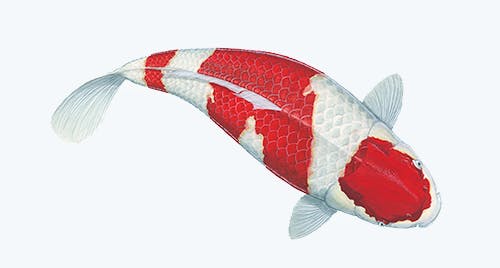All feed formulas developed by Aller Aqua at the Aller Aqua Research Centre follow these requirements to ensure proper growth and health:
Protein Needs: Koi require a moderate to high protein diet, especially during their growth phases. Protein content in koi feed typically ranges from 30% to 40% crude protein. Proteins support muscle growth, repair, and overall health.
Fat and Energy Needs: Dietary fat content is generally around 5-10%, providing energy and essential fatty acids. Koi need fat for metabolic energy and to support vibrant coloration. Fish oils or plant-based oils are common sources.
Essential Nutrients: Koi require a balanced diet rich in vitamins (A, C, D, E, and B-complex), minerals (calcium, phosphorus, potassium, magnesium), and essential fatty acids. Additionally, carotenoids and other pigments in feed help maintain and enhance their bright colors.
Feeding Considerations: Koi are omnivorous and benefit from a mix of formulated pellets, live foods, and plant matter. Their metabolism slows in colder water, so protein needs decrease during winter months.
